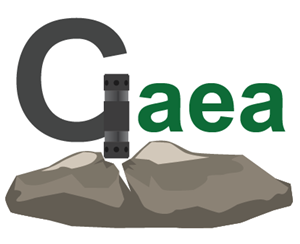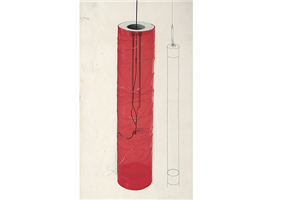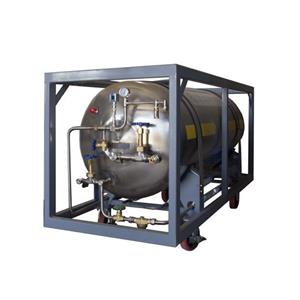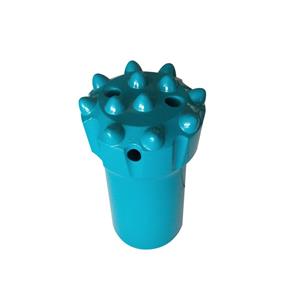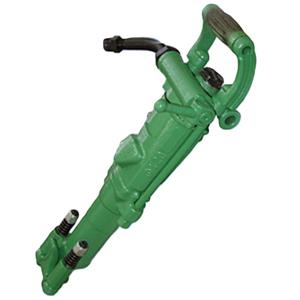6 Major Trends in Future Mining That Cannot Be Overlooked
With the development of industry, the demand for mineral resources continues to increase. Currently, both developed and developing countries regard the possession and development of resources as strategic measures. As a result, mining development has seen the emergence of numerous efficient, safe, and low-cost mining technologies and methods. It is essential to keep pace with advanced technologies to effectively develop resources.
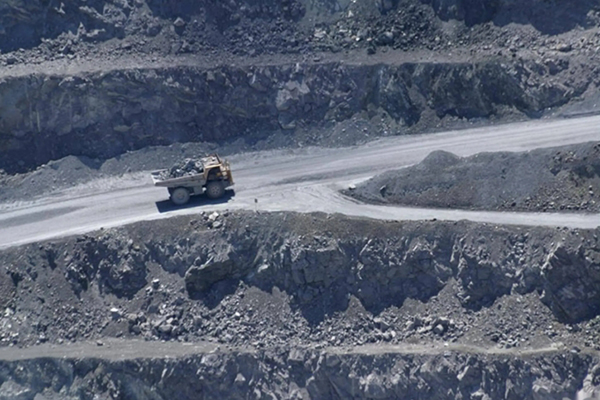
(I) Intelligence in Underground Mines
Currently, underground mines worldwide are pursuing efficiency and safety, leading to continuous improvements in mechanization and automation levels. Take Sweden's Kiruna Iron Mine as an example. The Kiruna Iron Mine is renowned for producing high-grade iron ore (with an iron content exceeding 70%) and is one of the world's largest iron mines. Its iron ore extraction. Has a history of over 70 years, transitioning from open-pit to underground mining. The intelligence of the Kiruna Iron Mine primarily benefits from the use of large-scale mechanical equipment, intelligent remote control systems, and modern management systems. Highly automated and intelligent mining systems and equipment are key to ensuring safe and efficient extraction.
Development. The Kiruna Iron Mine uses a combined shaft and ramp development system. The mine has three shafts for ventilation, ore and waste rock hoisting. Personnel, equipment, and materials are mainly transported using trackless equipment via ramps. The main hoisting shaft is located on the footwall of the ore body. To date, the mining face and main transportation system have been lowered six times, with the current main transportation level at 1045 m.
Drilling, Charging, and Blasting. Tunnel driving uses jumbo drills equipped with three-dimensional electronic measuring instruments for precise hole positioning. Stope drilling employs the Simba W469 remote-controlled drill rig produced by Sweden's Atlas Copco, with a hole diameter of 150 mm and a maximum hole depth of 55 m. This rig uses a laser system for accurate positioning, is unmanned, and can operate in 24-hour continuous cycles. The annual ore blasting volume can reach 3 million tons.
Remote Ore Loading, Transportation, and Hoisting. Drilling, loading, transportation, and hoisting in the Kiruna Iron Mine's stopes have all achieved intelligence and automation, with drill rigs and loaders operating unmanned. Ore loading uses the Toro 2500E remote-controlled loader, with a single-unit efficiency of 500 t/h. The underground transportation system includes belt conveyance and automated rail transport. Automated rail transport typically consists of 8 ore cars, which are automated bottom-dump cars for continuous loading and unloading. Belt conveyors automatically transport ore from the crushing station to the measuring device, completing loading and unloading with the shaft skip, all under remote control.
Remote-Controlled Concrete Spraying Technology and Support Reinforcement Technology. Tunnel support uses a combination of shotcrete, rock bolts, and mesh. This is completed by remote-controlled concrete sprayers, with rock bolts and steel mesh installed using bolting rigs.
(II) Increasingly Widespread Application of Leaching Technology
Currently, leaching technology is widely used in recovering low-grade copper, gold ores, uranium ores, etc. Leaching technologies include in-situ leaching, heap leaching, and in-situ blasting leaching. Countries like the United States, Canada, and Australia generally use heap leaching and in-situ blasting leaching to recover 0.15%–0.45% low-grade copper ores, over 2% copper oxide ores, and 0.02%–0.1% uranium ores.
Taking the United States as an example, there are over 20 mines using in-situ blasting leaching for copper. For instance, Nevada's Mike Mine and Arizona's Zonia Copper Mine each produce more than 2.2 tons of copper per day. Montana's Butte Mine and Copper Queen Branch Mine produce 10.9–14.97 tons of copper metal per day. In the U.S., leaching copper accounts for over 20% of total production, gold exceeds 30%, and the vast majority of uranium production comes from leaching mining.
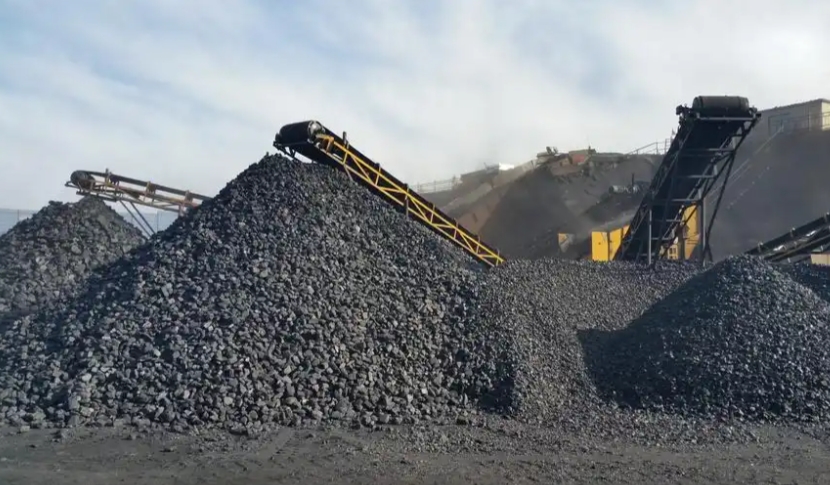
(III) Deep Shaft Mining Technology
As resource volumes continue to decrease, mining depths are increasing, often exceeding 1000 m. This brings many difficulties and problems not encountered in shallow mining, such as increased ground pressure, higher rock temperatures, and greater challenges in hoisting, drainage, support, and ventilation.
Common issues in deep shaft mines:
Hoisting Capacity. As mining depth increases, the first issue encountered is the mine's hoisting capacity. Current hoists can achieve a maximum single lift height exceeding 2000 m, such as a Canadian mine with a deepest single lift of 2172 m, and a South African gold mine with a shaft depth of 2310.4 m. Hoisting equipment capabilities fully meet the requirements of large deep shaft mines.
Rock Temperature and Ventilation Cooling. As mining depth increases, rock temperatures rise accordingly. For example, in Japan's Toyoha Copper-Zinc Mine at the -600 m level (about 1200 m from the surface), rock temperatures exceed 100°C, but many countries stipulate that underground temperatures cannot exceed 28°C. Deep shaft mines commonly increase underground ventilation volume and cool the air using air cooling and water cooling methods. When selecting one or both, in addition to lowering temperatures, attention must also be paid to reducing heat dissipation from underground mechanical equipment, diesel equipment, and refrigeration equipment itself.
Ground Pressure Management and Mining Methods. Deep shaft mines generally establish a complete ground pressure measurement and monitoring system, which directly affects whether mining production can proceed smoothly and the level of production costs. Rock bursts are a prominent issue in deep shaft mining. To predict rock bursts, many mines install microseismic monitoring devices underground, such as the U.S. Sunshine Silver Mine, which installed microseismic monitoring at the 2254 m level for 24-hour monitoring.
Spontaneous Combustion and Explosion. Deep shaft mining may also encounter spontaneous combustion of sulfide ores due to high ore temperatures and self-explosion during explosive charging, which requires sufficient attention.
At present, the mining depth of non-coal mines in China generally does not exceed 700–800 m, but in recent years, some ore deposits buried at depths of about 1000 m are being developed, including the Dongguashan Copper Mine under Tongling Nonferrous Metals Company and the Jinchuan No. 2 Mining Area.
(IV) Mine Environmental Protection Work
In foreign countries, especially developed nations, comprehensive measures are adopted for mine environmental management. Strict technical standards apply to wastewater, exhaust gases, slag, dust, noise, etc., discharged from mines. Many low-grade mines cannot be constructed or put into production due to excessive environmental treatment costs.
Currently, there is an emphasis abroad on establishing waste-free and clean mines. Germany's Walsum Coal Mine in the Ruhr industrial area is a successful example. It uses coal slime from the coal washing plant, ash from coal-fired power generation, and crushed underground waste rock mixed with cement, activated and stirred, then pumped underground with a PM pump to fill voids. The mine discharges no solid waste externally.
(V) Filling Mining Technology
Different filling materials are used based on varying conditions:
Regional Support. High-quality rigid filling materials are needed to reduce elastic volume closure and the hazards of rock bursts.
Rock Strata Control. Filling material quality requirements are not strict, but large-scale filling is needed, and the filling should not shrink after placement.
Multi-Vein Mining. Filling materials require rigidity under low stress conditions to minimize rock deformation and displacement.
Environmental Control. To ensure the hanging wall is sealed to prevent airflow through the mined-out area, the filling material should not shrink, and large-area filling is required.
Reducing Waste Rock Hoisting. Preparing and crushing waste rock underground for filling materials, thereby improving efficiency.
Current considerations for filling:
Focus efforts on forming practical and reliable systems. Research and develop effective filling technologies to integrate filling operations with mining cycles. Emphasize management of filling systems.
Research technologies to optimize existing systems, including particle size distribution for high-quality filling materials, improved filling material preparation processes in hydrocyclones and crushing, and optimized conveying technologies such as pressure loss, wear, corrosion, and overall filling system design.
Strengthen quantitative understanding of filling material preparation, conveyance, placement, and load deformation processes to lay the foundation for safe, stable, and efficient mining. Internationally used filling processes include hydraulic sand filling, dry filling, high-water solid filling, and cemented filling. Cemented filling is further divided into: segmented tailings hydraulic filling (high-concentration gravity conveyance), other filling material hydraulic filling (high-concentration gravity conveyance), full tailings paste gravity filling, and full tailings paste pumping filling. The internationally recommended method is full tailings paste pumping filling.
Currently, Canada has 12 mines using high-concentration paste filling, and South Africa and Australia also have new paste filling systems in operation. New filling processes will better meet requirements for resource protection, environmental protection, efficiency improvement, and mine development. Filling mining will have broader prospects in the 21st-century mining industry.
(VI) Oceanic Polymetallic Nodule Mining
Polymetallic nodules occur on the seabed at depths of about 3000–5000 m. To mine them, feasible mining methods are essential. Therefore, countries worldwide prioritize developing reliable mining methods and have conducted extensive experimental research, some even performing mid-scale deep-sea mining trials. From the late 1960s to now, internationally developed and tested ocean mining methods mainly fall into three categories: Continuous Line Bucket (CLB) mining, seabed remote-controlled vehicle mining, and fluid lift mining.
Continuous Line Bucket (CLB) Mining Method. This method was proposed by the Japanese in 1967. It is relatively simple, mainly consisting of a mining ship, tow cable, buckets, and a towing ship. Buckets are attached to the tow cable at certain intervals and lowered to the seabed. The tow cable, driven by the towing ship, moves the buckets downward, scoops, and upward. This stepless rope cyclic operation forms a continuous collection loop. The main feature of CLB is its ability to adapt to depth changes and maintain normal operations. However, CLB's production is only up to 100 t/d, far below industrial mining requirements. Thus, the CLB mining method was abandoned in the late 1970s.
Seabed Remote-Controlled Vehicle Mining Method. This method was mainly proposed by the French. The seabed remote-controlled vehicle is an unmanned submersible mining vehicle, primarily composed of four systems: ore collection, self-propulsion, buoyancy control, and ballast. Under monitoring from the surface mother ship, the mining vehicle dives to the seabed according to commands to collect nodules. Once full, it surfaces and unloads nodules into the mother ship's receiving bin. The surface mother ship can typically control multiple mining vehicles simultaneously. This mining system requires significant investment, and with low product value and no economic benefits for decades, the French Oceanic Nodule Research and Development Association ceased research in 1983. However, the collection and transport principles of this mining vehicle are considered promising.
Fluid Lift Mining Method. Currently, the internationally recognized method with the most industrial application potential is fluid lift mining. When the mining ship arrives at the mining area, the collector and lift pipe are connected and gradually lowered into the sea. The collector gathers nodules from seabed sediments and performs initial processing. Using hydraulic or pneumatic lifting, water in the pipe moves upward at sufficient speed to transport nodules to the surface mining ship.
With the advent of human ocean development and utilization in the 21st century, ocean mining technology is particularly important. The development of modern high-tech has paved the way for ocean resource exploitation, and its formation and advancement will have a positive and far-reaching impact on the world ocean economy, culture, and human ocean awareness.
